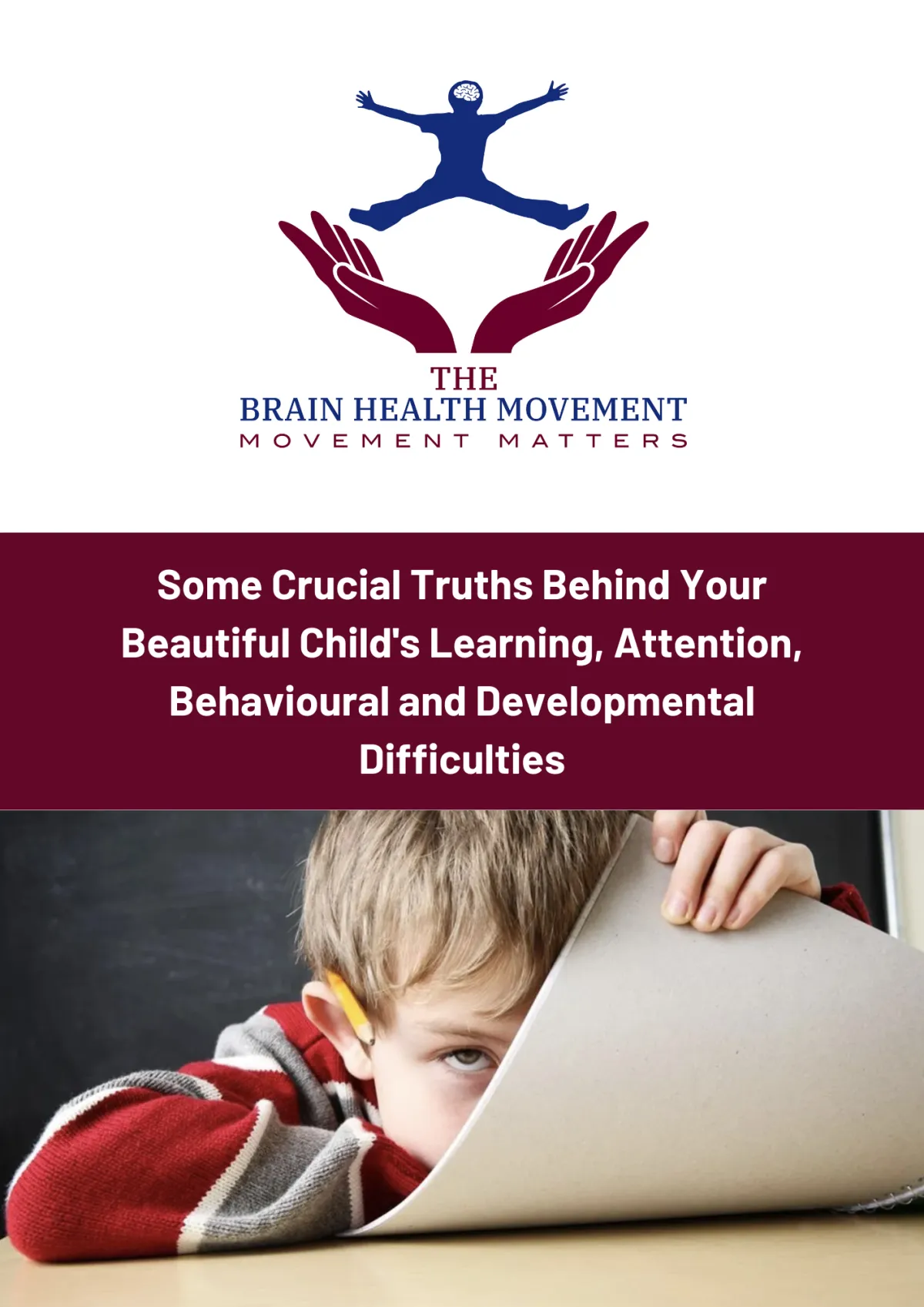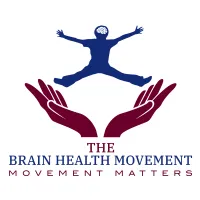FREE MASTERCLASS - Discover the real reasons behind your child’s struggles and what to do next.
THE BRAIN HEALTH MOVEMENT
Kind. Accessible. Effective.
THE BRAIN HEALTH MOVEMENT BLOG

The Sound of Healing: How Music Can Rewire the Brain
If your child struggles with attention, learning, anxiety, speech, sleep - or all of the above - there’s a lesser-known root cause that may be quietly running the show.
It’s not just about what they eat, how they sleep, or even the supplements they take (though all of those matter deeply).
It’s about what - and how - they hear.
Sound processing is one of the most foundational, overlooked aspects of brain development. When it’s off, everything’s harder.

🎵 Why Sound Matters More Than We Think 🎵
Before a baby sees your face, they hear your voice.
Sound is the first sense that fully develops in utero - and it’s the most underestimated route to healing neurodevelopmental challenges.
Disordered sound processing is at the root of so many of our children’s struggles:
Trouble with listening, attention, or comprehension
Hyper- or hypo-sensitivity to noise
Poor posture or balance
Delayed speech, difficulty reading, or language regression
Emotional dysregulation or “behavioral” outbursts
Sleep issues and sensory overload
Even chronic inflammation or gut distress
If your child’s brain is misprocessing sound - too much, too little, or out of sequence - their whole system will struggle to keep up.
But here’s the good news:
With the right sound input, delivered in the right way, the brain can change.
Music can literally rewire the nervous system.
We’re not just talking about kids with diagnosed auditory processing disorders.
We’re talking about all children affected by birth trauma, sensory overload, stress in utero, or neuroinflammation - which is most kids today.
That’s where neuroacoustic music comes in.
This isn't background lullabies or white noise machines.
Neuroacoustic music is a science-backed intervention that uses specific frequencies to literally shift the brain into states of healing, learning, calm, or focus.
Imagine music that helps your child:
fall asleep faster,
regulate emotions,
focus on schoolwork,
or even rebuild broken auditory pathways.
Think of it like physical therapy for the brain - using sound.
And the best part?
It’s non-invasive, beautiful to experience, and backed by neuroscience.
But how does it actually work?
Which programs are safe, research-backed, and accessible for families?
And why might this be the missing piece for your child?

In a world of pills, protocols, and parenting hacks, the healing power of something as ancient and intuitive as sound might seem almost too simple.
But science says otherwise.
In recent years, researchers in neuroscience and psychology have uncovered something remarkable: sound can heal the brain.
More specifically, neuroacoustic music - a form of therapeutic listening - can shift brainwave states, support emotional regulation, and improve cognitive function.
And for children struggling with attention, learning, anxiety, or developmental delays, this may be one of the most powerful, underused tools available.
Let’s unpack what this is, how it works, and what you can start doing today.
🧠 What Is Neuroacoustic Music? 🧠
Neuroacoustic music refers to sound therapy designed to influence brainwave activity through precise frequencies, vibrations, and patterns.
This isn't about listening to Beethoven while doing homework. It’s music engineered to entrain the brain into specific states - calm, focused, creative, or deeply restful.
Using tools like binaural beats, isochronic tones, and filtered frequency soundscapes, neuroacoustic music can influence the brain’s electrical activity and promote states aligned with healing, regulation, and learning.

🎵 The Brain's Frequency Map 🎵
Your brain communicates using waves - measured in Hertz (Hz) - that reflect different mental and emotional states:
Delta (0.5–4 Hz) – Deep sleep and healing
Theta (4–8 Hz) – Creativity, daydreaming, light sleep
Alpha (8–12 Hz) – Calm alertness and flow
Beta (12–30 Hz) – Active thinking, learning
Gamma (30–100 Hz) – Peak cognition, integration
When the brain is dysregulated (hello, stress, trauma, inflammation), these rhythms get disrupted. Neuroacoustic music helps reset the rhythm.
Types of Neuroacoustic Music Therapies
Here’s a deeper look at some of the most powerful, evidence-informed sound-based interventions available:
🎶 The Safe and Sound Protocol (SSP) 🎶
Developed by Dr. Stephen Porges (creator of the Polyvagal Theory), SSP delivers filtered music to stimulate the vagus nerve and bring the body out of fight-or-flight.
Used with trauma survivors, children with autism, ADHD, and anxiety, it’s designed to improve:
Social engagement
Auditory processing
Emotional regulation
Sleep and digestion
Many parents report seeing their child become more present, connected, and responsive — often within days of starting SSP.
🎶 Therapeutic Listening 🎶
This approach uses specially designed music tracks with varying frequencies and rhythms to target the vestibular and auditory systems simultaneously.
It helps with:
Body awareness and motor planning
Emotional grounding
Focus and attention
Language development
Children often wear headphones during play or daily routines — creating passive yet profound neurological shifts.
🎶 The Tomatis Method 🎶
A French-based auditory training program that uses electronically modified classical music and voice recordings to enhance listening and communication skills.
It’s often used for:
Language delays or dyslexia
Speech challenges
Auditory processing disorder
Cognitive and emotional integration
Tomatis therapy “exercises” the ear and brain to better process sound — improving both receptive and expressive language.
🎶 Johansen Individualized Auditory Stimulation (JIAS) 🎶
This method offers customized music CDs or audio files based on a child’s specific auditory profile. It’s used to improve:
Attention and memory
Reading and spelling
Listening comprehension
Sound sensitivity
Because it’s personalized, JIAS is especially helpful for children with highly specific auditory processing issues.
🎶 iLs (Integrated Listening Systems) 🎶
Combining filtered music with movement-based activities and visual input, iLs supports whole-brain integration.
Often used in occupational therapy settings, it improves:
Motor coordination
Attention
Learning
Behavior and self-regulation
This multi-sensory approach is especially powerful for kids with retained reflexes, poor muscle tone, or sensory integration dysfunction.
Why This Matters Deeply for Children with Learning & Developmental Challenges
Children with ADHD, autism, dyslexia, auditory processing disorder (APD), anxiety, and trauma often have one thing in common:
They struggle to process sound correctly.
That might look like:
Being distracted by background noise
Trouble following verbal instructions
Speech delays or articulation issues
Anxiety in noisy environments
Frequent meltdowns or zoning out
This isn’t just a sensory issue - it’s a brain function issue.
And here’s the magic: when you improve sound processing, the whole brain begins to function better.
Check early-years root causes and further signs and symptoms of auditory processing issues in children with our free checklist!

What the Research Shows
✔ Reduces cortisol (the stress hormone)
✔ Improves attention span and executive function
✔ Supports emotional regulation
✔ Helps with sleep initiation and deep rest
✔ Promotes neuroplasticity and brain healing
✔ Boosts memory, learning, and language development
Getting Started
Not every sound therapy program is right for every child.
Some require guidance from a trained provider.
Others can be downloaded and used at home.
But what they all have in common is this: they use sound not just to soothe - but to rewire.
Start by noticing how your child responds to different types of music or background noise.
Do they calm down with rhythmic tones?
Do they get dysregulated in noisy environments?
These clues will help guide your next steps.
Final Thought
In The Brain Health Movement, we talk a lot about upstream root causes.
And sound - how it's processed, perceived, and patterned in the brain - is one of the earliest, most foundational systems in child development.
If your child can’t process sound correctly, they can’t learn, connect, or heal properly either.
But with the right frequencies, you can begin to tune their brain back into harmony.
Because healing doesn’t always start with a pill.
Sometimes, it starts with a sound.
Want to Go Deeper?
If this topic resonates - if your gut says, "Yes, this is my child” - then you’ll want to hear from one of the most insightful practitioners on this subject that I know.
In “The Whole Child, Multi-Disciplinary Roadmap to Healing" course, we go even deeper with Charlotte Davies, an expert in auditory processing and neurodevelopment.
In her powerful module, Charlotte explains how sound impacts not just speech and language - but posture, balance, primitive reflexes, visual recall, emotional regulation, and even face and jaw development.
She shares the subtle signs that your child may be mis-processing sound - and exactly where to start.
And in our podcast conversation:
“Sound is a Superpower: Breaking the Barriers to Hearing and Development,”
Charlotte unpacks why sound is not just a sensory issue - it’s a gateway to connection, cognition, and healing.
💥 If your child seems “stuck” developmentally…
💥 If school is a struggle, or speech isn’t flowing…
💥 If you feel like no one is seeing the real root cause…
Then this is for you.

Are you feeling overwhelmed and unsupported with your child's struggles?
Does the lack of clear guidance, scientific explanation or support from school, SEN, the NHS or anywhere else, leave you frustrated and without clear direction?

